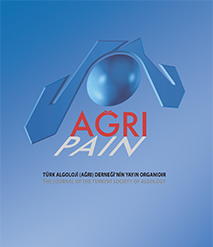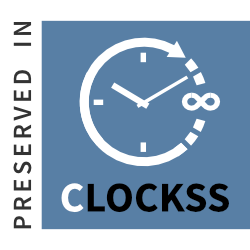Pain beliefs of cancer patients and associated factors
Ülkü Özdemir1, Aysel Tokaç Akdeniz21Department of Internal Medicine Nursing, Erciyes University Faculty of Health Sciences, Kayseri, Türkiye2Department of General Surgery Intensive Care, Kayseri City Hospital, Kayseri, Türkiye
Objectives: The aim is to determine the pain beliefs and related factors of cancer patients.
Methods: The study was designed as a descriptive and analytical type. It was completed between January and June 2019 with 100 individuals who were 18 years of age or older, who were receiving chemotherapy, and who agreed to participate in the study. Data were collected using a patient information form, a pain assessment form, and the Pain Beliefs Scale.
Results: In the results of the regression analysis, the psychological belief scores of those who acted nervously were statistically 0.408 points higher than those who acted calmly. Organic beliefs scores were statistically 0.814 points and 0.599 points higher in basically literate and primary school graduates, respectively, compared to university graduates. They were 0.372 points higher for those whose income was less than their expenditure compared to those whose income was balanced with their expenditure, 0.414 points higher in those who had experienced pain in the last 6 months compared to those who had not, and 0.561 points higher in those who did not use non-pharmacological methods in pain control compared to those who did. Those who expressed pain verbally were found to have points that were 0.447 higher than those who did not say they had pain.
Conclusion: Based on the results obtained, it is recommended that cancer patients be given training that will improve self-management and self-efficacy with cognitive-behavioral methods, taking into account their pain beliefs and affecting factors, in order for them to be successful in pain management.
Kanser hastalarının ağrı inançları ve ilişkili faktörler
Ülkü Özdemir1, Aysel Tokaç Akdeniz21Erciyes Üniversitesi Sağlık Bilimleri Fakültesi, İç Hastalıkları Hemşireliği Anabilim Dalı, Kayseri2Kayseri Şehir Hastanesi, Genel Cerrahi Yoğun Bakım, Kayseri
Amaç: Bu çalışmanın amacı, kanser hastalarının ağrı inançları ve ilişkili faktörleri belirlemektir.
Gereç ve Yöntem: Tanımlayıcı ve analitik tipteki çalışma, Ocak 2019–Haziran 2019 tarihlerinde 100 birey ile tamamlandı. On sekiz yaş ve üstündeki, kemoterapi tedavisi almakta olan ve çalışmaya katılmayı kabul eden bireyler çalışmaya dahil edildi. Veriler, hasta bilgi formu, ağrı değerlendirme formu ve Ağrı İnançları Ölçeği kullanılarak toplandı.
Bulgular: Regresyon analizi sonuçlarına göre sinirli davrananların psikolojik inanç puanları istatistiksel olarak sakin davranan-lardan 0,408 puan fazla bulundu. Organik inançlar puanları istatistiksel olarak; okuryazar ve ilköğretim mezunlarında üniversite mezunlarına göre sırasıyla 0,814 puan ve 0,599 puan, geliri giderden az olanlarda gelir giderle dengeli olanlara göre 0,372 puan, son altı ay ağrı yaşayanlarda yaşamayanlara göre 0,414 puan, ağrı kontrolünde nonfarmakolojik yöntem kullanmayanlarda kullananlara göre 0,561 puan, ağrıyı sözel ifade edenlerde ağrısı olduğunu söylemeyenlere göre 0,447 puan fazla bulundu.
Sonuç: Çalışmadan elde edilen sonuçlar doğrultusunda, kanser hastalarında ağrı yönetiminin başarılı olabilmesi için ağrı inançlarının ve etkileyen faktörlerin göz önünde bulundurularak, bilişsel-davranışçı yöntemlerle, öz yönetim ve öz yeterliliği geliştirecek eğitimlere yer verilmesi önerilmektedir.
Manuscript Language: Turkish





